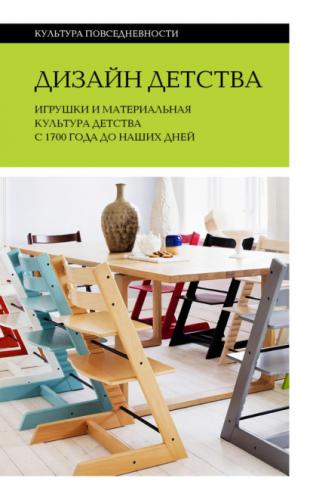Дизайн детства. Игрушки и материальная культура детства с 1700 года до наших дней. Коллектив авторов
Читать онлайн книгу.2004; Linn S. Consuming Kids: The Hostile Takeover of Childhood. N. Y.: The New Press, 2004; Kline S. Out of the Garden: Toys and Children’s Culture in the Age of Television Advertising. N. Y.: Verso, 1993. P. 107–143; Kinderculture: The Corporate Construction of Childhood / ed. by S. Steinberg. Boulder, CO, 2011.
40
Seiter E. Sold Separately; Buckingham D. The Material Child: Growing up in Consumer Culture. Cambridge: Polity Press, 2011; Buckingham D., Tingstad V. Childhood and Consumer Culture. L.: Routledge, 2010; Pugh A. Longing and Belonging: Parents, Children, and Consumer Culture. Berkeley: University of California Press, 2009; Lindstrom M., Seybold P. Brain-Child: Remarkable Insights into the Minds of Today’s Global Kids and Their Relationships with Brands. L.: Kogan Page, 2003; The Children’s Culture Reader / ed. by H. Jenkins. N. Y.: New York University Press, 1998.
41
См., например: Allison J. Confections, Concoctions, and Conceptions // The Children’s Culture Reader. P. 394–405.
42
Schor J. Born to Buy. P. 51–55.
43
Kline S. Out of the Garden. P. 143.
44
Об этой дискуссии можно почитать у Эллен Зайтер (Seiter E. Sold Separately: Parents and Children in Consumer Culture. New Brunswick: Rutgers University Press, 1993). В этой книге автор отстаивает точку зрения, что детское потребление часто связано с желанием быть принятым в группе сверстников и освободиться от власти взрослых. Из-за этого дети подражают своим сверстникам, которые вовсе не обязательно следуют взрослым образцам классового и расового потребления. – Примеч. автора.
45
Cross G. The Cute and the Cool: Wondrous Innocence and Modern American Children’s Culture. Oxford: Oxford University Press, 2004. P. 12.
46
Goldstein J., Buckingham D., Brougére G., eds. Toys, Games and Media. L.; Mahwah, NJ: Lawrence Erlbaum Publishers, 2004; Kids’ Media Culture / ed. by M. Kidner. Durham: Duke University Press, 1999. О мультфильмах см.: Seiter E. Sold Separately; Television and New Media Audiences. N. Y.: Oxford University Press, 1998; а также Seiter E. Power Rangers at Preschool: Negotiating Media in Childcare Settings // Kids’ Media Culture. P. 239–262.
47
Cross G. The Cute and the Cool. P. 31.
48
В оригинале – pester power. Продавцы рассчитывают, что дети надоедливыми просьбами вынудят родителей сделать покупку.
49
Kline S. Out of the Garden. P. 143–173.
50
Program-Length Commercials – «реклама длиной в передачу»; рекламный ролик, который выглядит и воспринимается как мультфильм.
51
Cross G. Kids’ Stuff. P. 188–227.
52
Fleming D. Powerplay: Toys as Popular Culture. Manchester: Manchester University Press, 1995. P. 112–113.
53
Jacobson L. Raising Consumers: Children and the American Mass Market in the Early Twentieth Century. N. Y.: Columbia University Press, 2004; Denisoff D. The Nineteenth-Century Child and Consumer Culture. Burlington: Ashgate, 2008.
54
Jacobson L. Raising Consumers. P. 127–159.
55
Tween – ребенок от 8 до 12 лет, еще не достигший подросткового возраста.
56
Cook D. The Commodification of Childhood: The Children’s Clothing Industry and the Rise of the Child Consumer. Durham: Duke University Press, 2004; Cook D. Commercial Enculturation: Moving Beyond Consumer Socialization // Buckingham and Tingstad, Childhood and Consumer Culture. P. 63–79.
57
Cook D. Commercial Enculturation. P 71.
58
Marshall E. Young Women, Femininities and American Girl // Girlhood Studies. 2009. No. 1 (2). P. 94–111; Acosta-Alzuru C., Kreshel P. ‘I’m an American Girl… Whatever That Means’. Girls Consuming Pleasant Company’s American Girl Identity // Journal of Communication. 2002. No. 1 (52). P. 139–161; Acosta-Alzuru C., Roushanzamir E. ‘Everything We Do Is A Celebration of You!’. Pleasant Company Constructs American Girlhood // The Communication Review. 2003. No. 6. P. 45–69; Brookfield M. From American Girls into American Women: A Discussion of American Girl Nostalgia // Girlhood Studies. 2012. No. 1 (5). P. 57–75.
59
Nielsen F. American History through the Eyes of the American Girls // Journal of American and Comparative Cultures. 2002. No. 1–2 (25). P. 85–93; Marcus L. Dolling up History: Fictions of American Jewish Girlhood // Girlhood Studies. 2012. No. 1 (5). P. 14–36; Inness S. Anti-Barbies. P. 164–183; Lamb S., Brown L. Packaging Girlhood: Rescuing Our Daughters from Marketers’ Schemes. N. Y.: St. Martin’s Press, 2006.
60
«Милая маленькая книжечка» считается одной из первых детских книг. В ней напечатаны простые детские стихи на каждую букву алфавита.
61
Bernstein R. Children’s Books, Dolls and the Performance of Race: or the Possibility of Children’s Literature // Dolls Studies. P. 4.
62
Wolf M. Adapting the Death Star into LEGO: the Case of Lego Set #10188 // LEGO Studies: Examining the Building Blocks of a Transmedial Phenomenon / ed. by M. Wolf. L.: Routledge, 2015. P. 15–39. О LEGO также см.: Konzack L. The Cultural History of LEGO // LEGO Studies. P. 1–14; Robertson D. Brick by Brick: How LEGO Rewrote the Rules of Innovation and Conquered the Global Toy Industry. N. Y.: Crown Business, 2013; Baichtal J., Meno J. The
